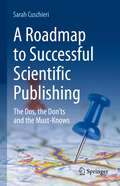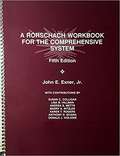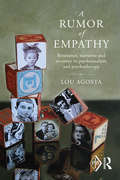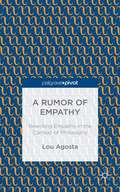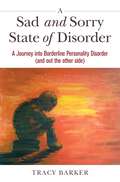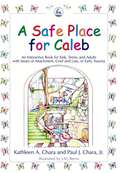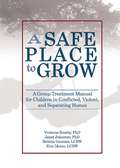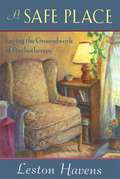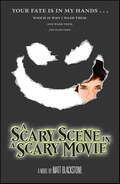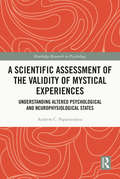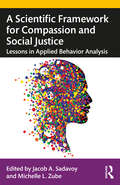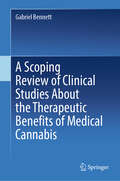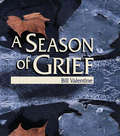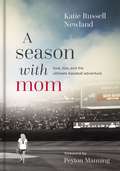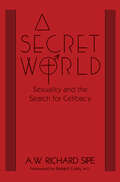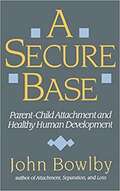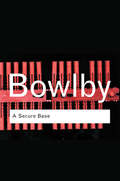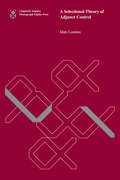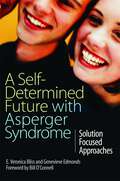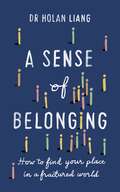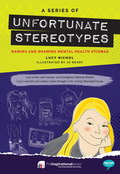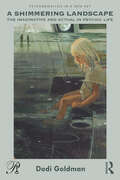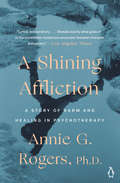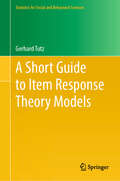- Table View
- List View
A Roadmap to Successful Scientific Publishing: The Dos, the Don’ts and the Must-Knows
by Sarah CuschieriIn the age of "publish or perish," this book provides everything one needs to know about conducting research and successfully publishing it in a scientific journal. The reader learns about the complete process of scientific publishing: from selecting the most appropriate research design, to obtaining permissions and funding, to resourcefully presenting the research results in a poster and oral presentation. Additionally, the practical tips provided here help the reader formulate a compelling scientific article and choose the most suitable journal (subscription vs. the various open access modalities) for their publication.This book also addresses "invisible aspects" of scholarly publishing that are nonetheless important and that everyone should know and understand: avoiding predatory journals, understanding the editor's perspective, and becoming familiar with the various research metrics (from author to journal) that can all determine success or failure of a publication. Written in an informal style in which the author shares personal perspectives and experiences, the book is easily accessible to the reader. The book offers early career scientists in biomedicine and medicine a unique perspective on publishing research articles and how this process can enhance the authors' "scientific value" within the scientific ecosystem as well as their personal CVs.
A Rorschach Workbook for the Comprehensive System (Fifth Edition)
by John E. ExnerA Rorschach Workbook for the Comprehensive System (Fifth Edition) by John E. Exner
A Rumor of Empathy: Resistance, narrative and recovery in psychoanalysis and psychotherapy (Psychoanalytic Inquiry Book Series)
by Lou AgostaEmpathy is an essential component of the psychoanalyst’s ability to listen and treat their patients. It is key to the achievement of therapeutic understanding and change. A Rumor of Empathy explores the psychodynamic resistances to empathy, from the analyst themselves, the patient, from wider culture, and seeks to explore those factors which represent resistance to empathic engagement, and to show how these can be overcome in the psychoanalytic context. Lou Agosta shows that classic interventions can themselves represent resistances to empathy, such as the unexamined life; over-medication, and the application of devaluing diagnostic labels to expressions of suffering. Drawing on Freud, Kohut, Spence, and other major thinkers, Agosta explores how empathy is distinguished as a unified multidimensional clinical engagement, encompassing receptivity, understanding, interpretation and narrative. In this way, he sets out a new way of understanding and using empathy in psychoanalytic theory and clinical practice. When all the resistances have been engaged, defences analyzed, diagnostic categories applied, prescriptions written, and interpretive circles spun out, in empathy one is quite simply in the presence of another human being. Agosta depicts the unconscious forms of resistance and raises our understanding of the fears of merger that lead a therapist to take a step back from the experience of their patients, using ideas such as "alturistic surrender" and "compassion fatigue" which are highlighted in a number of clinical vignettes. Empathy itself is not self-contained. It is embedded in social and cultural values, and Agosta highlights the mental health culture and its expectations of professional organizations. This outstanding text will be relevant to psychoanalysts, psychotherapists who wish to make a contribution to reducing the suffering and emotional distress of their clients, and also to trainees who are more vulnerable to the professional demands on their capacity for empathic listening. Lou Agosta, Ph.D. teaches empathy in systems and the history of psychology at the Illinois School of Professional Psychology at Argosy University. He is the author of numerous articles on empathy in human relations, aesthetics, altruism, and film. He is a psychotherapist in private practice in Chicago, USA. See www.aRumorOfEmpathy.com
A Rumor of Empathy: Rewriting Empathy in the Context of Philosophy
by Lou AgostaA rumor of empathy in vicarious receptivity, understanding, interpretation, narrative, and empathic intersubjectivity becomes the scandal of empathy in Lipps and Strachey. Yet when all the philosophical arguments and categories are complete and all the hermeneutic circles spun out, we are quite simply in the presence of another human being.
A Sad and Sorry State of Disorder: A Journey into Borderline Personality Disorder (and out the other side)
by Tracy Barker[This] is me offering hope, if that is what is needed, whether you suffer from borderline personality disorder or care for someone who does. It is me making an effort to raise awareness of this very misunderstood mental illness. Borderline personality disorder (BPD) is often considered difficult, if not impossible to treat by medical professionals. This can make the situation seem hopeless to those who are diagnosed with BPD. Based on her own experience of living with BPD, Tracy Barker shares how she has learned to manage the condition and live a full life. With poetry used to capture her lowest moments, this book gives an unfiltered look into life with BPD. Tracy shares how she has gone from being in full-time therapy to happily married, offering hope to those living with BPD, and providing awareness of the condition to their families and friends.
A Safe Place for Caleb: An Interactive Book for Kids, Teens and Adults with Issues of Attachment, Grief, Loss or Early Trauma
by Paul J. Chara Jane M. Berns Kathleen A. CharaA Safe Place for Caleb is a comprehensive and richly illustrated resource for individuals of all ages who are dealing with attachment problems. Parents, professionals, and lay people will find this book helpful in understanding and addressing attachment disorders in children, adolescents, and adults. The first half of the book is an interactive story that follows the experiences of Caleb, a young boy who relates his difficulties and frustrations in forming and sustaining healthy relationships. He learns strategies for coping with attachment issues during his journey to the Safe Tree House, where he is introduced to the four 'attachment healing keys'. These act as therapeutic tools to unlock difficulties with attachment, and are presented using text and illustrations that are easily accessible for readers of all ages, even for young children. The second half of the book presents a summary of current scientific thought on attachment styles and disorders, and provides a wide array of assessment tools, photocopiable material and healing techniques to address attachment difficulties. Lists of helpful organizations and relevant reading materials are also presented. Based on established psychological principles, the book is a unique and imaginative guide for professionals, parents, caregivers, and people of all ages who are dealing with attachment issues.
A Safe Place to Grow: A Group Treatment Manual for Children in Conflicted, Violent, and Separating Homes
by Erin Moore Vivienne Roseby Janet Johnston Bettina GentnerDiscover the effective group treatment strategies that help your school-aged clients! A child immersed in a conflicted family life may be forced to cope with a multitude of trauma, including violence, abuse, and insecurity. In A Safe Place to Grow: A Group Treatment Manual for Children in Conflicted, Violent, and Separating Homes, highly respected experts give mental health professionals the tools to provide effective group treatment for children scarred by family environments of conflict and abuse. This easy-to-understand, step-by-step manual is a developmentally appropriate treatment curriculum for traumatized school-aged children. Age-appropriate sections separate therapy for big or little kids, focusing on efficacy while presenting a comfortable multi-ethnic, multi-cultural model. A Safe Place to Grow has easy-to-understand descriptions of techniques, with each session in the curriculum containing games and activities that are therapeutic yet flexible enough to be modified whenever the situation warrants. A chapter is included to helpfully troubleshoot problems encountered when in session with either age group of children. Useful illustrations accompany the text, along with a comprehensive bibliography listing additional therapeutic resources for different types of family problems. Appendixes are included for instruction on psycho-educational groups for parents that enhance their sensitivity to their children&’s needs, as well as providing an evaluation study of the group model itself.A Safe Place to Grow provides a sequence of activities within the group model aimed at each of these five goals: creating common ground and safety exploring the language and complexity of feeling defining and understanding the self defining and revising roles and relationships restoring a moral orderA Safe Place to Grow is an essential resource for social workers, psychologists, family and child therapists, school counselors, and battered women and children&’s advocates.
A Safe Place: Laying the Groundwork of Psychotherapy
by Leston HavensDrawing on his rich experience within psychiatry, Leston Havens takes the reader on an extraordinary journey through the vast and changing landscape of psychotherapy and psychiatry today. Closely examining the dynamics of the doctor-patient exchange, he seeks to locate and describe the elusive therapeutic environment within which psychological healing most effectively takes place.
A Scary Scene in a Scary Movie: A Novel
by Matt BlackstoneRene, an obsessive-compulsive fourteen year old, smells his hands and wears a Batman cape when he's nervous. If he picks up a face-down coin, moves a muscle when the time adds up to thirteen (7:42 is bad luck because 7 + 4 + 2 = 13), or washes his body parts in the wrong order, Rene or someone close to him will break a bone, contract a deadly virus, and/or die a slow and painful death like someone in a scary scene in scary movie. Rene's new and only friend tutors him in the art of playing it cool, but that's not as easy as Gio makes it sound.
A Scientific Assessment of the Validity of Mystical Experiences: Understanding Altered Psychological and Neurophysiological States (Routledge Research in Psychology)
by Andrew C. PapanicolaouIn this book the approach of the natural sciences is adopted to confront the ontological question of how far mystical experiences can be considered as reports of an objective reality rather than reports of subjective delusions. Moving beyond traditional philosophical or cultural and theological interpretations of mystical phenomena, the author uses inductive inference to analyze claims made by secular and religious mystics, highlight links between altered states of consciousness and neurochemistry, and counters reductionist claims that mystical states are exclusively products of neurochemical, neurophysiological, or psychopathological factors. The text also considers the positive long-term effects of proper use of psychedelics and meditation. This fresh approach to mystical experiences will be of interest to scholars, researchers, and postgraduate students working in the areas of psychology and neuroscience, and with an interest in mysticism in religious studies and philosophy.
A Scientific Framework for Compassion and Social Justice: Lessons in Applied Behavior Analysis
by Jacob A. Sadavoy; Michelle L. ZubeA Scientific Framework for Compassion and Social Justice provides readers with an in-depth understanding of the behavior analytic principles that maintain social justice issues and highlights behavior analytic principles that promote self-awareness and compassion. Expanding on the goals of the field of applied behavioral analysis (ABA), this collection of essays from subject-matter experts in various fields combines personal experiences, scientific explanations, and effective strategies to promote a better existence; a better world. Chapters investigate the self-imposed barriers that contribute to human suffering and offer scientific explanations as to how the environment can systematically be shaped and generate a sociocultural system that promotes harmony, equality, fulfilment, and love. The goal of this text is to help the reader focus overwhelming feelings of confusion and upheaval into action and to make a stand for social justice while mobilizing others to take value-based actions. The lifelong benefit of these essays extends beyond ABA practitioners to readers in gender studies, diversity studies, education, public health, and other mental health fields.
A Scoping Review of Clinical Studies About the Therapeutic Benefits of Medical Cannabis
by Gabriel BennettThe book delves into the rapidly evolving field of medical cannabis and its potential therapeutic applications. The importance of this topic cannot be overstated, as medical cannabis has emerged as a promising alternative or adjunctive therapy for numerous medical conditions. With the shifting legal landscape and increasing public interest, it is crucial for healthcare professionals, researchers, policymakers, and patients to have access to a comprehensive and up-to-date resource. This book aims to provide a concise and insightful resource that consolidates the findings from a wide range of clinical studies, enabling readers to gain a comprehensive understanding of the current state of knowledge in this field.
A Season of Grief
by Bill ValentineThis unique book celebrates a long-term, interracial relationship and details the everyday struggles of a surviving partner trying to carry on in a radically changed world.A Season of Grief chronicles the author's emotional descent after the violent death of his partner of 21 years. Bill Valentine's journal of fear, anger, denial, and loneliness captures the glimmers of hope, moments of serendipity, and mysterious coincidences that emerged from his full-time devotion to grief following the death of Joe Lopes. Lopes died along with 264 others when American Airlines Flight 587 crashed in November 2001 in route to the Dominican Republic. It was the second deadliest accident in U.S. aviation history. He is a word always on my lips as I try to work him into a conversation. He is a memory that I strive to keep alive. So yes, in this sense, he is not gone. But in reality, he is. He is gone as my lover. He is gone as my life partner. He is gone as my soul mate, the only person to whom I periodically bared my soul. He is gone as my best friend, the only person to whom I ever attached that label. So pardon me while I still hang on to the notion that he is not here with me. Pardon me while I cling stubbornly to the insistence that he is gone.Valentine's candid and thoughtful account of his heartbreaking efforts to make sense of his partner's death-and survive in a world without him-is by turns, funny, frightening, sobering, and surprising. In the nine months following the tragedy of Flight 587, Valentine finds every waking moment of his life affected by his partner's absence-from mundane household chores to major life decisions. A Season of Grief is a story told in darkness and light, of hurt and healing, love and loneliness, but mostly, of a man who learns to live with his partner's absence through the persistent, surprising evidence of his presence. Our job on earth is to live with uncertainty, ambiguity, and hope. We are given a limited tool set but one, in my opinion, that's sufficient for the job. Sufficient to allow us to be engaged in life-to love, grieve, work, play, celebrate, and despair. We have a remarkable ability to rebound and grow. We have been granted the capacity for wonder and laughter-especially at ourselves. These last two gifts were bestowed generously on Joe and he, in turn, taught me how vital they are.Making a strong case for gay marriage, A Season of Grief chronicles Valentine's struggles to be recognized as a surviving spouse, including a historic lawsuit with Lambda Legal Defense and Education fund against the New York State Workers Compensation Board. Valentine and Lopes took every conceivable step to formalize their relationship, including New York City Domestic Partnership, but the Workers Compensation Board and a New York State appeals court refused to recognize Valentine as a legal surviving spouse.Grief doesn't come with a set of instructions. But A Season of Grief can help guide you through the lonely journey that follows the death of a loved one. Valentine's memoir is a testament to the healing power of reality and the enduring nature of love.
A Season with Mom: Love, Loss, and the Ultimate Baseball Adventure
by Katie Russell Newland&“Maybe you&’ve been putting your own dreams on hold. Maybe you&’re recovering from your own illness. Maybe you&’ve lost someone you care about . . . After reading this book, you&’ll be eager to imagine your own amazing next season.&” -- Peyton Manning, from the foreword A Season with Mom offers readers an intimate, true story about the bond shared between a mother and daughter, a road trip to all 30 Major League Baseball (MLB) parks, and the importance of relishing every joy and struggle along the way.The book is highly recommended formothers and daughterscancer survivorsbaseball and sports fans of all agesanyone who has experienced loss . . . and maybe fallen in love along the wayJoin Katie as she travels more than 30,000 miles to all 30 MLB parks in a single season, a rare feat covered by the likes of ESPN. Along with black-and-white photographs, Katie shares letters written to her mom, who died of cancer before the two of them could go on the adventure of a lifetime together.During the journey, Katie beautifully illustrates the brevity of life, the impetus of adventure, and the clarity that comes by watching America&’s favorite pastime.A Season with Mom reminds readers that in life, as in baseball, sometimes you strike out, but sometimes you hit home runs. And even if the wait is longer than you&’d hoped--like it was for the Chicago Cubs&’ long-sought World Series win--dreams can come true.
A Secret World: Sexuality And The Search For Celibacy
by A.W. Richard SipeA Secret World is a valuable contribution to the field of Family Therapy. Looks at the history and origins of celibacy, discusses its role in the priesthood, and considers the psychological aspects of celibacy.
A Secure Base: Parent-child Attachment And Healthy Human Development
by John BowlbyThe world-famous psychiatrist and author of the classic works Attachment, Separation, and Lossoffers important guidelines for child rearing based on the crucial role of early intimate relationships.
A Secure Base: Parent-child Attachment And Healthy Human Development (Routledge Classics)
by John BowlbyAs Bowlby himself points out in his introduction to this seminal childcare book, to be a successful parent means a lot of very hard work. Giving time and attention to children means sacrificing other interests and activities, but for many people today these are unwelcome truths. Bowlby’s work showed that the early interactions between infant and caregiver have a profound impact on an infant's social, emotional, and intellectual growth. Controversial yet powerfully influential to this day, this classic collection of Bowlby’s lectures offers important guidelines for child rearing based on the crucial role of early relationships.
A Selectional Theory of Adjunct Control (Linguistic Inquiry Monographs)
by Idan LandauA novel, systematic theory of adjunct control, explaining how and why adjuncts shift between obligatory and nonobligatory control.Control in adjuncts involves a complex interaction of syntax, semantics, and pragmatics, which so far has resisted systematic analysis. In this book, Idan Landau offers the first comprehensive account of adjunct control. Extending the framework developed in his earlier book, A Two-Tiered Theory of Control, Landau analyzes ten different types of adjuncts and shows that they fall into two categories: those displaying strict obligatory control (OC) and those alternating between OC and nonobligatory control (NOC). He explains how and why adjuncts shift between OC and NOC, unifying their syntactic, semantic, and pragmatic properties. Landau shows that the split between the two types of adjuncts reflects a fundamental distinction in the semantic type of the adjunct: property (OC) or proposition (NOC), a distinction independently detectable by the adjunct's tolerance to a lexical subject. After presenting a fully compositional account of controlled adjuncts, Landau tests and confirms the specific configurational predictions for each type of adjunct. He describes the interplay between OC and NOC in terms of general principles of competition--both within the grammar and outside of it, in the pragmatics and in the processing module--shedding new light on classical puzzles in the acquisition of adjunct control by children. Along the way, he addresses a range of empirical phenomena, including implicit arguments, event control, logophoricity, and topicality.
A Self-Determined Future with Asperger Syndrome: Solution Focused Approaches
by E Veronica BlissA Self-Determined Future with Asperger Syndrome presents an empowering, practical approach to helping people with Asperger Syndrome (AS) to succeed at college, at work, at home and in life. The authors highlight how treating AS as a `problem' is unproductive, and advocate a solution focused approach which recognizes and uses the strengths of people with AS to foster mutual respect and understanding. Drawing on both their personal experience and knowledge of counselling, the authors use anecdotes and stories to show how people with AS cope in day-to-day situations. They also illustrate how effective communication and understanding of a person's needs and goals are key to improving daily life for people with AS. The final section of the book comprises practical worksheets and resources to help people with AS to recognize their achievements and work towards their goals. This book will be of interest to people who are affected by AS, their families, and the people who work with them.
A Sense of Belonging: How to find your place in a fractured world
by Dr Holan LiangA sense of belonging - being liked, understood, accepted for who we are - is vital for our mental health. Whether it is fitting in at school, struggling to connect with colleagues in a new job, or just feeling out of place in our own family, we all, at various stages in our lives, find ourselves questioning our identity. For Dr Holan Liang, one of the UK's foremost psychiatrists, this crisis of identity cuts right to the heart of the modern epidemic of anxiety and depression. In this ground-breaking book, she draws on her own experience as an immigrant to the UK, and on 20 years of caring for patients suffering from a range of mental health conditions, from depression and anxiety to ADHD and anorexia, to explore a radical new perspective on mental health.Warm, wise and full of humanity, A Sense of Belonging will help you to: understand the causes of loneliness, reprioritise the people and things that matter, stop people-pleasing, and learn how to accept yourself in order to find genuine connection.
A Series of Unfortunate Stereotypes: Naming and Shaming Mental Health Stigmas (Inspirational Series)
by Lucy NicholFrom a young age, Lucy Nichol has always been on edge. Whether it’s because of her fear of beards, a general sense that she can catch a disease from anything, or the belief that she’s going to throw up at any given moment, she’s never really felt safe. In A Series of Unfortunate Stereotypes, Lucy explores the different lenses through which she – and other people – have viewed her mental health problems. She tackles a number of different stereotypes placed on people living with mental illness, including the idea that they are narcissists, hypochondriacs, and psychos.After writing a blog post about her journey, Lucy realised that she wasn’t alone in feeling this way. And so she began to talk more about her experience, eventually becoming a columnist in Sarah Millican’s magazine Standard Issue. In writing about her life in such an open way, Lucy has been able to claw her way out of her anxiety.A Series of Unfortunate Stereotypes is one of the most fortunate things you could read!
A Shelter for Sadness
by Anne BoothThis poignant and heartwarming story explores the many faces of sadness and addresses the importance of mental health in a child-friendly way.A small boy creates a shelter for his sadness so that he can visit it whenever he needs to, and the two of them can cry, talk, or just sit. The boy knows that one day his sadness may come out of the shelter, and together they will look out at the world and see how beautiful it is.In this timely consideration of emotional wellbeing, Anne Booth has created a beautiful depiction of allowing time and attention for difficult feelings. Stunningly atmospheric illustrations by David Litchfield personify sadness as a living being, allowing young readers to more easily connect with the story's themes of emotional literacy.
A Shimmering Landscape: The Imaginative and Actual in Psychic Life (Psychoanalysis in a New Key Book Series)
by Dodi GoldmanAcclaimed Winnicott scholar Dodi Goldman offers an intriguing account of the psyche’s work of imaginative elaboration.Why does the world feel one way when we are imaginatively alive to it and quite another when we are not? How does one both imagine and see things as they are? What happens when we cannot do so? This book creatively explores the interplay between the imaginative and actual in psychoanalysis and life. Each chapter centers around an evocative visual image—a prehistoric figurine, a Hindu lithograph, an Italian etching, an Inuit statue, a painting by Magritte, and more—to reveal unexpected connections and novel insights into what enlivens experience to make the personal landscape shimmer.With a fresh and delightfully playful approach, this volume is essential reading for psychoanalysts, psychotherapists, humanities scholars, and anyone curious about the fragile alliance between the imaginative and actual in human experience.
A Shining Affliction: A Story of Harm and Healing in Psychotherapy
by Annie G. RogersIn the midst of her work with Ben, a severely disturbed five-year-old, Annie is hospitalized with her own breakdown and must finally uncover where her history of childhood terror overlaps with Ben's and learn how her work in the field of psychotherapy involves great risks and great gifts.
A Short Guide to Item Response Theory Models (Statistics for Social and Behavioral Sciences)
by Gerhard TutzThis book presents foundational concepts, essential principles, and practical applications of Item Response Theory (IRT). It provides a structured survey of diverse models that have been put forth, emphasizing both their differences and commonalities. The main focus is on modern latent trait theory models which provide measurement tools that clearly separate between person abilities and item parameters. The topics covered include the binary Rasch model, its extensions and alternative binary models, ordinal models and their extensions that account for response styles, the thresholds model, classical test theory, response models for count data, differential item functioning, and explanatory item response models. Tree-based item response models, typically not found in classical IRT textbooks, are also addressed. Applications of the models are illustrated on several data sets from differing areas, showing how models can be fitted and compared. All examples have been computed using R. Code snippets are provided, and the full R code for most of the examples is available online. The book is aimed at graduate students, applied statisticians, and researchers working in psychometrics, educators, and anyone curious about modeling strategies that enhance the precision and validity of their measurement tools. It serves as an introductory guide for beginners while also providing a resource for those seeking an overview of the plethora of available IRT models.
